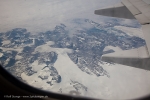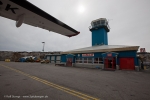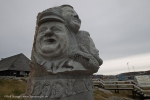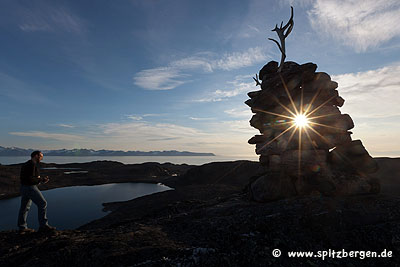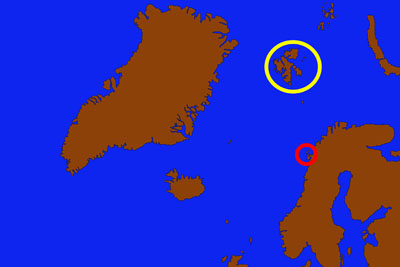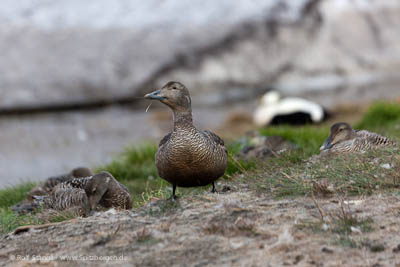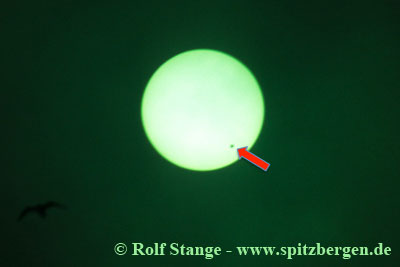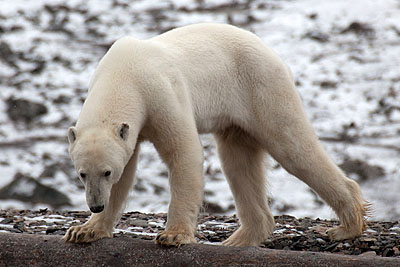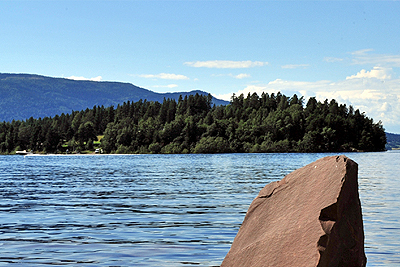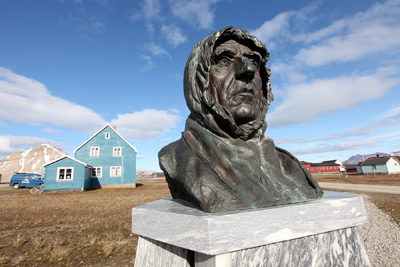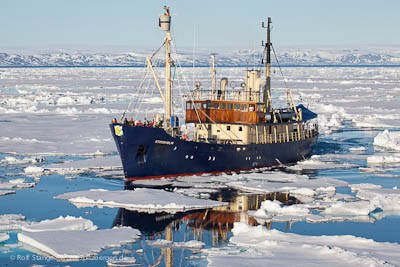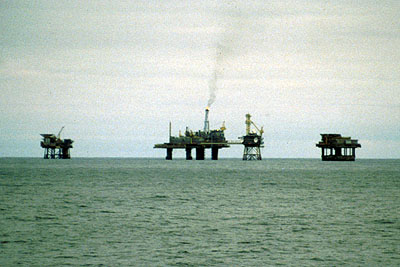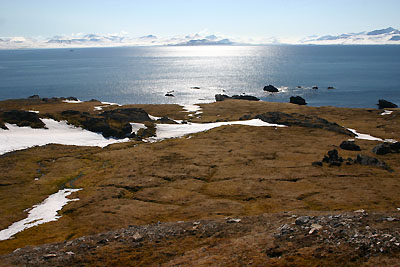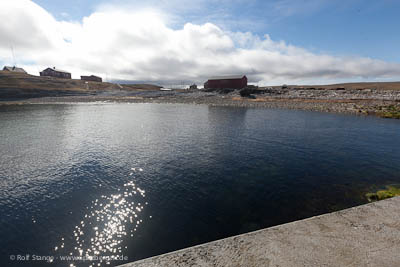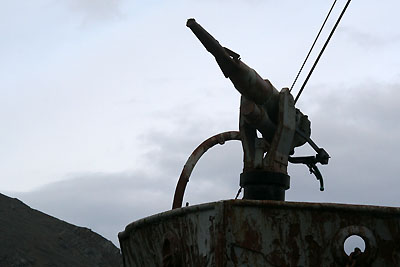-
current
recommendations- Liefdefjord
New page dedicated to one of Spitsbergen's most beautiful fjords. Background information and many photos.
- New Spitsbergen guidebook
The new edition of my Spitsbergen guidebook is out and available now!
- Liefdefjord
New page dedicated to one of Spitsbergen's most beautiful fjords. Background information and many photos.
Page Structure
-
Spitsbergen-News
- Select Month
- May 2025
- April 2025
- March 2025
- February 2025
- January 2025
- December 2024
- November 2024
- October 2024
- September 2024
- August 2024
- July 2024
- June 2024
- May 2024
- April 2024
- March 2024
- February 2024
- January 2024
- December 2023
- November 2023
- October 2023
- September 2023
- August 2023
- July 2023
- June 2023
- May 2023
- April 2023
- March 2023
- February 2023
- January 2023
- December 2022
- November 2022
- October 2022
- September 2022
- August 2022
- July 2022
- June 2022
- May 2022
- April 2022
- March 2022
- February 2022
- January 2022
- December 2021
- November 2021
- October 2021
- September 2021
- August 2021
- July 2021
- June 2021
- May 2021
- April 2021
- March 2021
- February 2021
- January 2021
- December 2020
- November 2020
- October 2020
- September 2020
- August 2020
- July 2020
- June 2020
- May 2020
- April 2020
- March 2020
- February 2020
- January 2020
- December 2019
- November 2019
- October 2019
- September 2019
- August 2019
- July 2019
- June 2019
- May 2019
- April 2019
- March 2019
- February 2019
- January 2019
- December 2018
- November 2018
- October 2018
- September 2018
- August 2018
- July 2018
- June 2018
- May 2018
- April 2018
- March 2018
- February 2018
- January 2018
- December 2017
- November 2017
- October 2017
- September 2017
- August 2017
- July 2017
- June 2017
- May 2017
- April 2017
- March 2017
- February 2017
- January 2017
- December 2016
- November 2016
- October 2016
- September 2016
- August 2016
- July 2016
- June 2016
- May 2016
- April 2016
- March 2016
- February 2016
- January 2016
- December 2015
- November 2015
- October 2015
- September 2015
- August 2015
- July 2015
- June 2015
- May 2015
- April 2015
- March 2015
- February 2015
- January 2015
- December 2014
- November 2014
- October 2014
- September 2014
- August 2014
- July 2014
- June 2014
- May 2014
- April 2014
- March 2014
- February 2014
- January 2014
- December 2013
- November 2013
- October 2013
- September 2013
- August 2013
- July 2013
- June 2013
- May 2013
- April 2013
- March 2013
- February 2013
- January 2013
- December 2012
- November 2012
- October 2012
- September 2012
- August 2012
- July 2012
- June 2012
- May 2012
- April 2012
- March 2012
- February 2012
- January 2012
- December 2011
- November 2011
- October 2011
- September 2011
- August 2011
- May 2011
- April 2011
- March 2011
- February 2011
- January 2011
- December 2010
- November 2010
- September 2010
- August 2010
- July 2010
- June 2010
- May 2010
- April 2010
- March 2010
- February 2010
- November 2009
- October 2009
- August 2009
- July 2009
- June 2009
- May 2009
- April 2009
- March 2009
- February 2009
- January 2009
- December 2008
- November 2008
- October 2008
- August 2008
- July 2008
- June 2008
- May 2008
- April 2008
- March 2008
- February 2008
- April 2000
- Select Month
-
weather information
-
Newsletter

| Guidebook: Spitsbergen-Svalbard |
Home →
Yearly Archives: 2012 − News & Stories
Aasiaat (Disko Bay, Westgreenland), 13th June, 2012
While the rest of the world was watching 22 Dutch and Germans running after a black-and-white ball, I was on my own following a black-and-white bird (a male snow bunting) in Aasiaat. Here some impressions of this first day in west Greenland, soon there will be more.
aasiaat (gallery)
- gallery anchor link: #gallery_268
Click on thumbnail to open an enlarged version of the specific photo.
Beginning of arctic shipping season 2012
The midnight sun is shining over Spitsbergen’s fjords since late April and most of the birds have started their breeding business by now. Most tourist ships that sail Spitsbergen’s coastal waters, from large cruise ships to small sailing boats, are now on their way up north, some are already there.
The owner of this website is also soon on his way north and will be there (Spitsbergen and west Greenland) until late September. The news section will accordingly be updated less frequently than during recent months, but there will be updates and news of importance will, if necessary, be posted with a little delay – but they will appear here.
The travel blog site (triplogs, photo galleries) of trips of the 2012 season will soon be updated regularly until late September/early October. So – please visit again!
Spitsbergen under the midnight sun: the sailing season in the high norht has started.
Svolvær – or Svalbard…?
An American lady was more than just a bit surprised when she found out where she actually was in the airport of Longyearbyen. She had intended to travel up to Svolvær, the main settlement in Lofoten, a group of islands off the coast of north Norway.
The reason for the not so little detour was the similarity between the words “Svolvær” and “Svalbard”, as the Norwegians commonly call Spitsbergen. The lady had asked the travel agency for a ticket to Svolvær but got one to Svalbard, without anyone taking notice of the difference. She was a bit surprised about the passport control in Tromsø, but did not pay any further attention to it.
She said she enjoyed her 2 days in the high arctic after the first surprise, until a seat on a flight back was available.
Svalbard (yellow circle) and Svolvær (red): a little difference.
Source: Svalbardposten (2112)
Eider duck news
Eider duck news: Biologists have revealed some interesting facts about common eider ducks in Spitsbergen. They were negatively affected by egg and down feather collecting until they were protected in 1963. Since 1973, important breeding colonies, mostly on small islands, may not be visited anymore without special permission, which is only issued to scientists and occasionally professional local down collectors. Nevertheless, numbers of breeding common eiders at colonies in Kongsfjorden have remained stable, but did not increase.
Another colony in Bellsund shows however pronounced growth: this is the colony on the small island Eholmen, where a local Norwegian trapper has collected down over years. Careful collecting does not have any negative impact on the breeding success. Protection from predators such as polar bears and foxes which is provided by the trapper seems to have a positive impact, making the site attractive for breedings ducks. The numbers of breeders have consequently increased significantly.
Common eider ducks may possibly also benefit from a warming climate, for example from an early break-up of fjord ice which makes breeding colonies on islands inaccessible for the polar fox, which is generally an important predator.
Breeding common eiders in Adventdalen near Longyearbyen.
Source: NINA.
Passage of Venus on June 6th
Astronomers are looking forward to a very rare event in the early morning hours of June 06th: a passage of Venus. Observation opportunities will be excellent in northern Scandinavia and in Spitsbergen. Every 130 years there are 2 transits of Venus with a few years between them. The last one was in 2004. The current one will be the last chance to observe such an event until December 2117.
You wouldn’t see if if you didn’t kow about it, but it is a very important and spectacular moment for astronomers. Historically, transits of Venus were very important for science, as the simultaneous observation of a transit from different places on Earth allowed, for example, the distance to the sun to be calculated.
If you want to see something, you will need – next to good weather – at least binocular and sufficient eye protection. If you try to observe it withour proper eye protection, you risk to lose your eyesight immediately and permanently!
Transit of Venus, Iceland 2004. Venus is visible as a dark dot (arrow). The foto was taken with binoculars and welding glasses.
No “ozone hole” above the arctic this year
At least occasionally, there are good news from the environmental sector: After the alarmingly strong depletion of the stratospheric ozone concentration in the high arctic measured in 2011, the “zone hole” seems to be “mended” by nature this year, as there hasn’t been any comparable ozone loss this spring.
The reason is the slightly higher temperature in the higher atmosphere compared to last year: Only temperature lower than -78°C enable “ozone killers”, artificial compounds such as CFCs, together with sun radiation to crack ozone molecules.
Stratospheric ozone filters large amounts of natural UV radiation and is thus highly important for all living things, from single-celled organisms to humans. Important scientific work on the atmospheric ozone is carried out, amongst others, by the Alfred Wegener Institute in Ny Ålesund.
Radiosonde to be released in Ny Ålesund.
Source: Spiegel-Online
Polar bear attack in Tempelfjorden: case closed in Norway
Norwegian authorities will not continue with any further criminal prosecution regarding the polar bear attack on a camp in Tempelfjorden in August 2011, during which a 17 year old was killed and 4 other ones partly seriously injured. The Sysselmannen decided already in late February that the incident was a combination of several extremely unlucky circumstances rather than a criminal offence (see February news on this website). This decision was now confirmed by the attourney in charge in north Norway.
This does not concern possible further criminal prosecution by British authorities.
The polar bear that attacked the group in Tempelfjorden was at least has hungry as this very thin bear in Duvefjord (Nordaustland). Additionally it had strong pain from the bad condition of his teeth.
Source: Sysselmannen
Attack on Utøya: Viljar Hanssen from Longyearbyen bears witness in Oslo
Five young persons from Longyearbyen were directly struck by the attacks on Utøya and Oslo, where 77 people where killed by the extremist Anders Behring Breivik, who is often called ABB in Norway to avoid speaking out his full name. Amongst the five from Longyearbyen was Johannes Buø, who lost his life at the age of fourteen. Viljar Hanssen (18) was hit by five bullets and severely injured.
On Tuesday, June 22, Viljar Hanssen made his statement as a witness at the court in Oslo. According to members of the audience and himself, he was partly even able to make his statement with some humour. Later he said that his statement was an important and very helpful step for him to get over the events. He also said that the presence of ABB made little impression on him.
As everywhere in Norway, the attacks were received as a public shock in Longyearbyen and those involved were met with great empathy.
Utøya: a nice little holiday island until July 22 of last year, when it became the site of Norway’s most terrible violent felony in post-war history. (Foto: Wikimedia Commons).
Source: Svalbardposten (20/2012)
International climate symposium in Ny Ålesund
The sixth climate symposium in Ny Ålesund was held from 21 to 23 May. It is an almost annual meeting since 2006 between company leaders, politicians and scientists, including Norwegian trade minister Trond Giske and E.ON CEO Johannes Teyssen. Rajendra Pachauri, chairman of the Intergovernmental Panel on Climate Change of the UN, had to cancel his participation on short warning. His speech was transmitted via video screen to the symposium. Pachauri emphasized that the average global temperature rose by 0,74 % during the 20th century and if this trend is to continue, a 2,5°C rise until the end of the 21 century would be the result. An estimated 20-30 % of the global human population would loose their homes as a consequence.
The symposium does not produce major breakthrough decisions. Norway’s trade minister Giskke sent a doubtful signal these days when denoting that he might be open for long-term coal mining in Spitsbergen. So far observers commonly understand that the recently opened coal mine at Lunckefjellet is to be Spitsbergen’s last one.
The sixth climate symposium in Ny Ålesund was as always held under Roald Amundsen’s watchful eyes.
Source: VG,(Verdens Gang, Norwegian newspaper), Press release of the Norwegian Ministry of Trade
Pilotage in Spitsbergen
The current plans of the Norwegian government to introduce compulsory pilotage in Spitsbergen in a similar way as in Norway meets critizism and worries those concerned. Leading staff members of the responsible Norwegian coastal authority (Kystverket) have now expressed that they see that the current proposal needs to be adjusted to the different conditions in Spitsbergen.
Small ships with passenger numbers less or even far less than 100, that operate tours around Spitsbergen that can last up to more than 2 weeks, would mostly be forced to terminate their sailings in Spitsbergen immediately if compulsory pilotage comes into force as announced, involving costs of several hundred Euro per hour. All vessels longer than 70 metres and all passenger vessels longer than 24 metres are concerned.
Theoretically, experienced nautical officers can get fairway certificates, which means that they do not need to have a pilot on board. Given the current legislative proposal, this will however in practice be impossible for most. To mention only one example of the beaurocratic obstacles: The navigator needs to have sailed the relevant passage at least 6 times in every direction. This may make sense for the Norwegian coastline with its traffic patterns that are mostly shuttle traffic. In Spitsbergen, most ships circumnavigate the main island or the whole archipelago. As this is traditionally almost always done in a clockwise direction, there are Captains who have done this countless times – but only in one direction, so formally they don’t qualify for a fairway certificate.
Due to this and similar regulations, an estimated near 80 % of even the most experienced Captains will not be able to obtain fairway certificates. If the official pilot will be able to contribute with any knowledge that such Captains and officers do not have is yet another question.
Pilotage is announced to come into force stepwise until 2014. A decision is due in June.
MS Stockholm in drift ice at the north coast of Spitsbergen. The ship and her Captain are local maritime veterans.
Source: NRK
Russian-Norwegian oil cooperation in the northern Barents Sea
In early May, the Norwegian Statoil and the Russian Rosneft have signed a contract in Moscow in the presence of prime minister (now president) Putin to jointly explore and exploit the Perseyevsky oil field in the Russian sector of the northern Barents Sea. The Perseyevsky field ist east of Spitsbergen, westsouthwest of Franz Josef Land. The economic potential is believed to be near 35-40 billion US-$. The sea is 150-250 metres deep and regularly covered with seasonal drift ice.
Seismic explorations are supposed to clarify the geological structures over the next years. The first explorative drilling is planned for 2020.
The contract also includes Norwegian-Russian cooperation for several oil- and gas fields in Russia’s far east. In return, Rosneft will get engaged in Norwegian activities in the North Sea and the Norwegian sector of the Barents Sea.
Oil platforms in the North Sea. Views similar to this one will get more and more common also in the northern Barents Sea.
Source: Barentsobserver
Oil spill in the Russian Arctic
A serious oil spill occurred in the Russian Arctic in late April. Leaders of the department of the environment of the autonomous Nenets observed an oil fountain, about 25 metres high, for at least one day on April 20 and 21 on the field Trebs, which is located on the mainland of Russia south of the island of Novaya Zemlya. They say it took at least 36 hours to get the leakage under control. Until then, an estimated 2,200 tons of oil were spilled out over at least 1,5 square kilometres of tundra, including reindeer grazing grounds. At least initially, local waterways are said to remain unharmed.
The operator of the Trebs field, the Russian company Bashneft, is exercising a very restrictive information policy, which makes it very difficult to judge the further development.
According to Greenpeace Russia, the Russian industry is responsible for near 20.000 oil spills – annually. Most of them do not lead to consequences for the operators and happen without any public awareness.
The Trebs field of the Russian Bashneft.
Image © Bashneft.
Source: Barentsobserver
Isfjord: currently a sub-arctic fjord
The mostly relatively mild weather of the last months is only of secondary importance for the fact the the fjords on Spitsbergen’s west coast are currently largely ice free. The warm water temperature is the most important factor. The water temperature in the entrance to Isfjorden is currently at 1,5 degrees Celsius or even more through the whole water column. Seawater freezes near -1,7 degrees C. Normally, parts of the water column should be below zero.
The reason is the currently strong influence of the West Spitsbergen current (“gulf stream”) that has pushed colder arctic waters out and away from the west coast. This changes not only the physical characteristics of the west coast fjords from high arctic to rather sub arctic, but also the local flora and fauna. Cod has been found more and more commonly in the bottom waters, together with haddock (another member of the cod family). Living blueshell have been observed for the first time in Isfjord in 2004 and has now been found in the harbour of Longyearbyen. Herrings ready for reproduction as has now been found is another “first” for these waters.
It can be assumed that these species have come to stay. Consequences for local ecosystems are difficult to predict.
Outer Isfjord seen from Alkhornet.
Source: Marine biologists from UNIS, Jørgen Berge, Ole J. Lønne, Tove M. Gabrielsen, in Svalbardposten 17/2012.
Bear Island will get its own “port”
Bear Island (Bjørnøya), situated half way between Skandinavia and Spitsbergen, has always had a bad reputation for difficult landing conditions: the island does not have any harbours or well sheltered fjords. Landings and any transport by boat are accordingly highly depending on weather conditions.
The situation is supposed to see some improvement for the Norwegian weather station on the north coast of Bear Island. A 26 metre long concrete wave breaker is supposed to make boat operations on the small pier easier. Construction work is scheduled to start in late July 2012. Currently, the pier can not be used during heavy weather.
Ships will, however, have to stay at anchor off the coast. Small boats will have to be used for any ship-to-shore operations also in the future, when construction works have been completed.
The current “port” at the weather station on Bear Island on a rare fairweather day.
Source: Folkebladet
Norwegian whaling season has started
The Norwegian whale hunting season 2012 has started a few days ago. 20 ships share a quota of 1286 Minke whales. Last year’s quota was similar, but “only” 533 whales were brought in due to the small demand and difficulties to sell the meat and other products.
The first catchers are on their way and have already harpooned several whales around Bear Island. Bear Island belongs to Spitsbergen (Svalbard), where strict regulations apply for tourism – in contrast to this, whaling does not seem to be a problem for Norwegian authorities, a perspective not shared by environmentalists.
Whale catcher with mounted harpoon gun. The foto shows the Petrel, a wreck beached in South Georgia that has not been used for decades. The technique is, however, still the very same.
Source: Finnmarkdagbladet
News-Listing live generated at 2025/May/04 at 04:44:58 Uhr (GMT+1)
